There are a lot of differences between Swing Trading & Scalping. These differences include timing, profit target, risk, money management & many more. Scalping is a very risky strategy and not suitable for everyone. However, Swing trading is perfect for both Novice and Professional traders.
AtoZ Markets – Many traders, especially beginners are eager to know the Difference between Swing Trading and Scalping. Scalping requires more expertise and experience & not suitable for novice traders. On the other hand, Swing trading is famous for accuracy and time management. However, there is a lot of quick earning opportunity in scalping that attracts the traders most. In swing trading, traders need to know lots of knowledge, and they should keep the up to date information on the market. This article is to provide basic differences between Swing Trading and Scalping.
What is Swing Trading?
Swing trading is a long-term trading style that requires patience to hold the trades for several days. This trading style is suitable for those who cannot monitor charts all day. However, the swing trader should dedicate some hours to analyzing the market every day. This trading style is perfect for those who have full-time jobs or business. Besides their working hours, they should have enough free time to analyze what is going on in global economies.
A swing is created when price formed a lower or higher high than any other surrounding prices. Swing trading finds the “swings” within a medium-term trend and enters only on a high probability of winning. For example, in an uptrend, the trader should buy “swing lows.” Conversely, in a downtrend, the trader should sell “swing highs.”

In swing trading, most of the trades last much longer than one day. In that case, larger stop losses are required with an appropriate money management plan. The main challenge for swing traders is to not getting panic over the short-term volatility. The trader should focus on the analysis and remain calm during these times. Since trades have larger take profit targets, spreads will not have an impact on the overall gains.
For swing trading, the trading pairs with lower liquidity and larger spreads are acceptable.
Want to trade forex with a regulated broker? Open a live account with AtoZ Markets approved Forex brokers:



What is Scalping?
Scalping is doing thousands of trades within a short trading period. Scalpers target price gaps and other short-term trading opportunities that allow them to turn quickly turn. In scalping, the trader enters multiple positions in a short time frame with the expectation of small gains.
Scalping is a popular method for its ease and psychological comfort. In a scalping strategy, profit realizes as soon as possible. On the other hand, holding a position for the longer term is stressful and difficult for novice traders. With scalping, trades are rarely last more than five minutes. The multiple short-term profits ensure a version of instant pleasure.

In the Scalping strategy, fundamental tools rarely work as it involves smaller time frames. However, the spread is the only problem while applying technical analysis. In a shorter time frame, the profits are smaller and there is a risk of sharing the profit with spread. Technical analysis is works similarly at every timeframe. However, in a 5-minute chart, it causes the problem with the spread. The scalpers always face a disadvantage in comparison to the long-term trader. In that case, the trader must have a strategy with better accuracy.
Difference between Swing Trading and Scalping
Timeframe for Swing Trading & Scalping
In scalping, a trader uses a Tick chart or 1-5 minute charts. On the other hand, the swing trader uses Daily or weekly charts. In the forex market, the candlestick pattern is mostly the same in all time frames. A scalper intends to gain a smaller profit from the short-term volatility of the market.
In a daily candle with a 100 pips move, the scalpers can gain more than 100 pips. Within a daily chart, there might be some ups and downs in a shorter time frame that allows the scalper to gain profit. On the other hand, swing traders hold their trade, and they do not care about the short-term movement.
Duration of trade
Scalping the market means works on a ‘quick in, quick out’ approach. The nature of this type of trading requires a trader’s whole attention. Scalper’s always looked for fast-moving opportunities. If the market allows, they can earn 100 pips within a minute.
On the swing trading, traders wait for days or weeks to hit the profit target. In a nonvolatile trend, their take profit may hit soon. On the other hand, they should wait for the market to reach their goal on a volatile structure.
Want to trade forex with a regulated broker? Open a live account with AtoZ Markets approved Forex brokers:



Level of trader
In comparing to the swing trading vs. scalping, the scalping can give quick profit. Although it is very risky. To scalp in the forex, traders should have a high level of expertise and experience. Scalpers must know the current trend structure, possibility of volatility, and timing of the movement. However, they do not need to know the big picture.
On the other hand, swing traders must have knowledge about suitable technical and fundamental analysis. Although it also requires a lot of experience and knowledge, it is not hard in comparison to scalping. Swing trading allows earning profit with less stress and it is perfect for beginners.
Strategy level
There are lots of scalping strategies available worldwide. In all of them, scalpers make a profit from the changes in an asset's bid-ask spread. The scalp trader buys a currency pair when the spread between the bid and the ask narrows.
Conversely, the scalper sells when the spread is wider than usual, with the ask higher and the bid lower than it should be. Scalper does not need to know the technical & fundamental analysis or geopolitical uncertainties. A new trader should learn a swing-trading strategy before going for the scalping. There are lots of swing trading strategies available in the market with indicator based, candlestick based, etc.
Targeted profits
There is a big difference between swing trading & scalping in terms of the targeted profit. A scalper usually targets 10 pips, 20 pips where a swing trader targets for 100, 200 or 500 pips. However, the target is dependent on the market conditions and the characteristics of the trend. The scalpers take lots of trade within a day, but swing traders take only one or two.
A swing trader spends patience and time to gain a profit while the scalper can gain a similar profit in a shorter time.

Number of trades
In the Intraday Scalping strategy, scalpers hold the trade for a few seconds to minutes, never overnight. The number of trades taken by the scalpers can be hundreds during a day. On the other hand, swing traders take few only. The swing traders hold the trade for a few days to weeks, even months at times. As the timing is high, swing traders do not need to pay attention to the number of trades.
Conclusion
Each trading system comes with its own set of risks and rewards. There is no perfect strategy that exists in the world that suits all traders. To gain from forex trader should choose a trading strategy based on the skill, temperament, the available time and the account size.
Should you do scalping or swing trading on your own at all?
Before you start trading, you'll want to read this.
Our in-house trading expert Dr Yury Safronau, PhD in Economic Sciences, gives you daily his best forex, metals, and cryptocurrencies to buy and sell signals right now.
His trading strategies which are based on non-linear dynamic models have achieved more than 65 000 pips of profits since 2015. And right now there are some very strong buy and sell signals across several markets you don't want to miss.
Want to see which ones?



